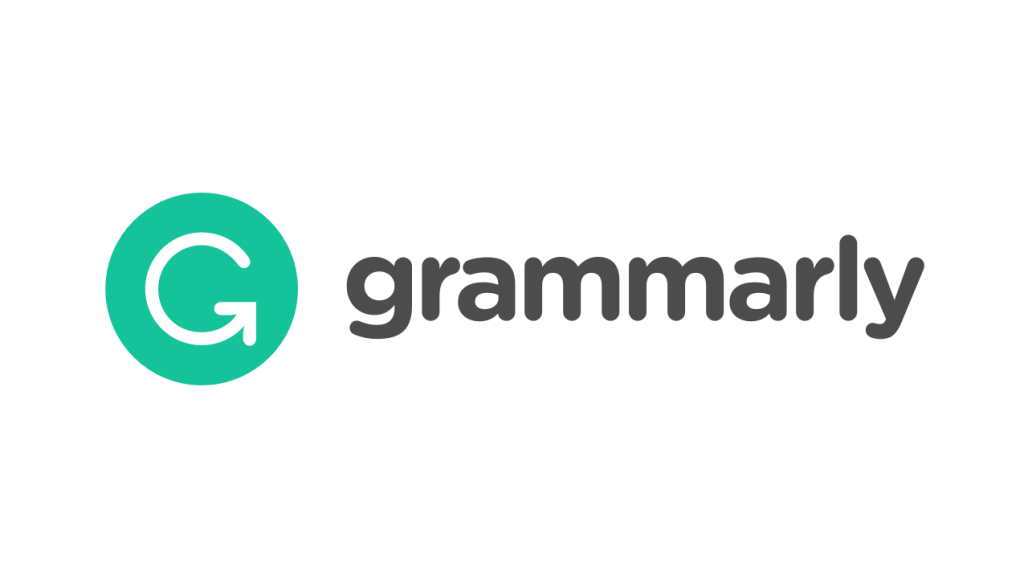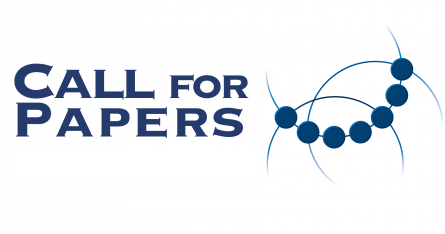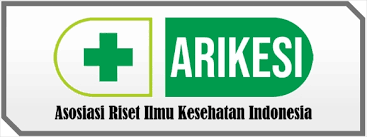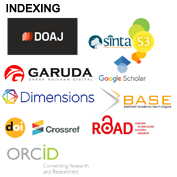Analyzing the Research Trend of Vitiligo in Dermatology From 1963 until 2023: A Bibliometric Analysis
Abstract
Background: Vitiligo is one of the most common skin pigmentation disorders, which could significantly impact the possessor’s quality of life. Scholars have devoted considerable effort to advance the understanding of vitiligo but until now the treatment modalities often fall into a suboptimal condition. There are abundance of scientific updates which challenges healthcare providers to catch up with all the vast knowledge. Objective: This study aims to provide a global picture of vitiligo research and the trend of vitiligo research. Methods: This study was a bibliometric analysis study that used Scopus as the primary article database. A total of 1374 articles were analyzed using VOSviewer and Biblioshiny. Result: There was an increasing number of vitiligo articles published annually from 1963 until 2023. The most productive counties were United States of America, India, and the United Kingdom. There were four major global vitiligo research topics including epidemiology, psychology, conventional treatment, and advanced treatment. Evaluating the psychological aspects of vitiligo patients using DLQI (Dermatological Life Quality Index) is one of the recent research topics. The treatment for vitiligo shifting towards on targeting specific molecular, such as biological agents and janus kinase inhibitors. Understanding the pathogenesis of vitiligo is needed to find a better treatment modality that is specific, effective, and has minimum adverse effects. Conclusion: Current global research efforts in vitiligo shifting towards the modality of treatment that targeting specific molecular based on the pathogenesis, with also encompassing the management psychological aspect to ensure better quality of life of the possessors.
Keywords
Full Text:
PDFReferences
Al-smadi, K., Imran, M., Leite-Silva, V. R., & Mohammed, Y. (2023). Vitiligo: A Review of Aetiology, Pathogenesis, Treatment, and Psychosocial Impact. Cosmetics, 10(3), 84. https://doi.org/10.3390/cosmetics10030084
Amerio, P., Giuliani, F., Coppola, M., Lobefaro, F., & Gualdi, G. (2023). Dermatology Publications on COVID-19 during the First Pandemic Year: Creativity or Opportunism? Life, 13(4). https://doi.org/10.3390/life13040953
Bae, J. M., Kim, M., Lee, H. H., Kim, K. J., Shin, H., Ju, H. J., Kim, G. M., Park, C. J., & Park, H. J. (2018). Increased Risk of Vitiligo Following Anti-Tumor Necrosis Factor Therapy: A 10-Year Population-Based Cohort Study. Journal of Investigative Dermatology, 138(4), 768–774. https://doi.org/10.1016/j.jid.2017.11.012
Bidaki, R., Majidi, N., Ahmadi, A. M., Bakhshi, H., Mohammadi, R. S., Mostafavi, S. A., Arababadi, M. K., Hadavi, M., & Mirzaei, A. (2018). Vitiligo and social acceptance. Clinical, Cosmetic and Investigational Dermatology, 11, 383–386. https://doi.org/10.2147/CCID.S151114
Dillon, A. B., Sideris, A., Hadi, A., & Elbuluk, N. (2017). Advances in Vitiligo an Update on Medical and Surgical Treatment. Journal of Clinical and Aesthetic Dermatology, 10(1), 15–28
Donthu, N., Kumar, S., Mukherjee, D., Pandey, N., & Lim, W. M. (2021). How to conduct a bibliometric analysis: An overview and guidelines. Journal of Business Research, 133, 285–296. https://doi.org/10.1016/j.jbusres.2021.04.070
Dwiyana, R. F., Marindani, V., Agustina, R., Setiawan, Idjradinata, P. S., & Sutedja, E. (2017). Cinico-Epidemiological Profile of Vitiligo Patients in Dr. Hasan Sadikin General Hospital Bandung. Majalah Kedokteran Bandung, 49(2), 132–138. https://doi.org/10.15395/mkb.v49n2.1056
Feng, Y., & Lu, Y. (2022). Advances in vitiligo: Update on therapeutic targets. Frontiers in Immunology, 13. https://doi.org/10.3389/fimmu.2022.986918
Karagaiah, P., Schwartz, R. A., Lotti, T., Wollina, U., Grabbe, S., & Goldust, M. (2023). Biologic and Targeted Therapeutics in Vitiligo. Journal of Cosmetic Dermatology, 22(1), 64–73. https://doi.org/10.1111/jocd.14770
Lee, I., Cha, K. B., & Nakamura, M. (2023). Research Dotspots in dermatology Journals. In JEADV Clinical Practice, 2(1), 162–165. https://doi.org/10.1002/jvc2.75
Manga, P., Elbuluk, N., & Orlow, S. J. (2016). Recent Advances in Understanding Vitiligo. F1000Research, 5. https://doi.org/10.12688/F1000RESEARCH.8976.1
Man, J. P., Weinkau, J. G., Tsang, M., & Sin, D. D. (2004). Why Do Some Countries Publish More Than Others? An International Comparison of Research Funding, English Proficiency and Publication Output in Highly Ranked General Medical Journals. European Journal of Epidemiology, 19, 811–817. https://doi.org/10.1023/b:ejep.0000036571.00320.b8
Maymone, M. B. C., Laughter, M., Vashi, N. A., Jones Jr., J. D., Hugh, J., Dunnick, C. A., & Dellavalle, R. P. (2020). The Most Cited Articles and Authors in Dermatology: A Bibliometric Analysis of 1974-2019. Journal of the American Academy of Dermatology, 8(1), 201–205. https://doi.org/10.1016/j.jaad.2020.02.071
Migayron, L., Boniface, K., & Seneschal, J. (2020). Vitiligo, From Physiopathology to Emerging Treatments: A Review. Dermatology and Therapy, 10, 1185–1198. https://doi.org/10.6084/m9.figshare.12928409
Padmakar, S., Murti, K., Pandey, K., Kumari, S., Kumar, R., Siddiqui, N. A., & Pal, B. (2022). Suicidal Ideation Associated with Vitiligo - A Systematic Review of revalence and Assessment. In Clinical Epidemiology and Global Health, 17. https://doi.org/10.1016/j.cegh.2022.101140
Passas, I. (2024). Bibliometric Analysis: The Main Steps. Encyclopedia, 4(2), 1014–1025. https://doi.org/10.3390/encyclopedia4020065
Patil, S., Gautam, M., Nadkarni, N., Saboo, N., Godse, K., & Setia, M. S. (2014). Gender Differences in Clinicoepidemiological Features of Vitiligo: A Cross-Sectional Analysis. ISRN Dermatology, 2014, 1–6. https://doi.org/10.1155/2014/186197
Picardo, M., Huggins, R. H., Jones, H., Marino, R., Ogunsola, M., & Seneschal, J. (2022). The Humanistic Burden of Vitiligo: A Systematic Literature Review of Quality-of-Life Outcomes. In Journal of the European Academy of Dermatology and Venereology, 36(9), 1507–1523. https://doi.org/10.1111/jdv.18129
Raynaud, M., Goutaudier, V., Louis, K., Al-Awadhi, S., Dubourg, Q., Truchot, A., Brousse, R., Saleh, N., Giarraputo, A., Debiais, C., Demir, Z., Certain, A., Tacafred, F., Cortes-Garcia, E., Yanes, S., Dagobert, J., Naser, S., Robin, B., Bailly, É., … Loupy, A. (2021). Impact of the COVID-19 Pandemic on Publication Dynamics and Non-COVID-19 Research Production. BMC Medical Research Methodology, 21(1). https://doi.org/10.1186/s12874-021-01404-9
Rousseau, R., Garcia-Zorita, C., & Sanz-Casado, E. (2023). Publications During COVID-19 Times: An Unexpected Overall Increase. Journal of Informetrics, 17(4). https://doi.org/10.1016/j.joi.2023.101461
Saiboo, A. A., Prakoeswa, C. R. S., Indramaya, D. M., Hidayati, A. N., Damayanti, Rahmadewi, Utomo, B., & Eliza, F. (2023). Characteristics and Clinical Profile of Vitiligo Patients in Dermatology and Venereology Outpatient Clinic Unit at Dr. Soetomo General Academic Hospital Surabaya. Berkala Ilmu Kesehatan Kulit Dan Kelamin, 35(1), 1–5. https://doi.org/10.20473/bikk.v35.1.2023.1-5
Said Fernandez, S., Sanchez DomÃnguez, C., Salinas Santander, M., Martinez Rodriguez, H., Kubelis Lopez, D., Zapata Salazar, et al (2021). Novel Immunological and Genetic Factors Associated with Vitiligo: A Review. Experimental and Therapeutic Medicine, 21(4). https://doi.org/10.3892/etm.2021.9743
Samela, T., Malorni, W., Matarrese, P., Mattia, G., Alfani, S., & Abeni, D. (2023). Gender differences in vitiligo: psychological symptoms and quality of life assessment description. In Frontiers in Psychology, 14. Frontiers Media SA. https://doi.org/10.3389/fpsyg.2023.1234734
Şenel, E. (2020). The depigmented literature: A Holistic Analysis of Global Vitiligo Publications between 1975 and 2017. Indian Journal of Dermatology, 65(5), 388–395. https://doi.org/10.4103/ijd.IJD_390_18
Shi, X., Sun, Y., & Ding, X. (2023). Impact of COVID-19 Vaccine and COVID-19 Infection on Vitiligo Activity and Progression. Clinical, Cosmetic and Investigational Dermatology, 16, 3581–3587. https://doi.org/10.2147/CCID.S439045
Siddiq, M. A., Obaid, M. A., Zaidi, S. D. e. Z., Azam, S. T., & Rangwala, B. (2022). Recently FDA-Approved Drug: A New Hope for Vitiligo Patients? Annals of Medicine and Surgery, 82. https://doi.org/10.1016/j.amsu.2022.104626
Snyder, H. (2019). Literature Review as a Research Methodology: an Overview and Guidelines. Journal of Business Research, 104, 333–339. https://doi.org/10.1016/j.jbusres.2019.07.039
Spritz, R. A., & Andersen, G. H. L. (2017). Genetics of Vitiligo. Dermatologic Clinics, 35(2), 245–255. https://doi.org/10.1016/j.det.2016.11.013
Suseno, L. S., Sukma, P. M. G., Rihatmadja, R., Agustin, T., Rahmayunita, G., & Novianto, E. (2018). Profile of Vitiligo Patients and Distribution of Narrowband-UVB Therapy at Dr. Cipto Mangunkusumo General Hospital. Journal of General-Procedural Dermatology & Venereology Indonesia, 3(2), 29–33. https://doi.org/10.19100/jdvi.v3i1.132
Tiwari, D., Goyal, M., Alam, A., & Verma, A. (2023). An Enigma of Sudden-Onset Vitiligo after COVID-19 Vaccination: A Literature Review. Indian Dermatol Online J, 14, 708–710. https://doi.org/10.4103/idoj.idoj_548_22
Van Eck, N.J., Waltman, L. (2014). Visualizing Bibliometric Networks. In: Ding, Y., Rousseau, R., Wolfram, D. (eds) Measuring Scholarly Impact. Springer, Cham. https://doi.org/10.1007/978-3-319-10377-8_13.
Xu, X., Zhang, C., Jiang, M., & Xiang, L. F. (2021). Impact of Treatment Delays on Vitiligo During The COVID-19 Pandemic: A Retrospective Study. Dermatologic Therapy, 34(4). https://doi.org/10.1111/dth.15014
Zhang, Y., Cai, Y., Shi, M., Jiang, S., Cui, S., Wu, Y., Gao, X. H., & Chen, H. D. (2016). The prevalence of vitiligo: A meta-analysis. PLoS ONE, 11(9). https://doi.org/10.1371/journal.pone.0163806
DOI: http://dx.doi.org/10.30742/jikw.v14i1.3934
Refbacks
- There are currently no refbacks.
Copyright (c) 2025 Hapsari Kinanti

This work is licensed under a Creative Commons Attribution-NonCommercial 4.0 International License.
Jurnal Ilmiah Kedokteran Wijaya Kusuma is licensed under a Creative Commons Attribution-NonCommercial 4.0 International License

Â









